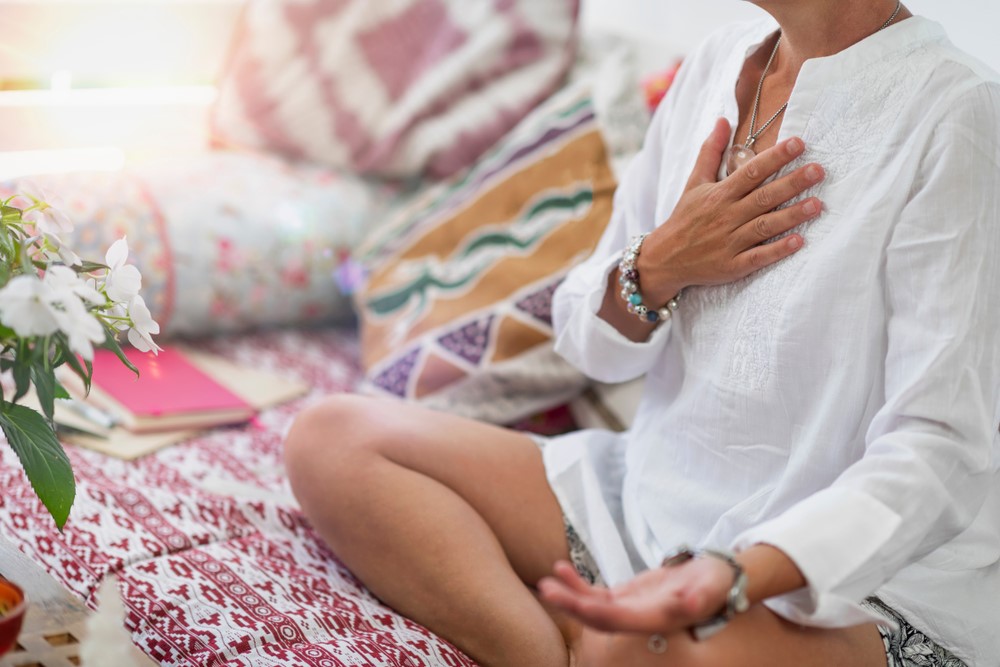
Pain is a serious problem for many seniors and caregivers. When Western medicine fails us, or is out of reach financially, the pain can drive many of us to explore alternative forms of therapy. Indeed, holistic pain management for seniors can be a powerful tool, where you are combining multiple approaches for reducing and managing your pain.
However, before you do that, make sure you understand the strength of the science behind these options and the limitations of what they can and cannot treat. You should also be aware of the risks, along with when such techniques might not be suitable.
After all, the goal is to decrease your pain, not to harm yourself. This is also why you should keep your healthcare provider in the loop about any approaches that you take.
Table of Contents
- What is Holistic Pain Management for Seniors?
- The Use of Complementary and Alternative Medicine in the United States
- Forms of Pain
- Conventional Methods for Pain Treatment/Management
- CAM Modalities for Pain Management
- Precautions
- Conclusion
What is Holistic Pain Management for Seniors?
First things first, what do we mean when we talk about holistic pain management for seniors?
The term holistic refers to the whole body. The idea here is that rather than just targeting the site of pain, you’re taking a whole body approach. Doing so helps the body respond better to pain, often meaning that your pain decreases as you go.
Some approaches include things you should already be doing every day, like eating well, getting enough sleep, and trying to decrease stress.
Others fall into the category of complementary and alternative medicine (CAM). The idea here is similar, except that CAM focuses on medical-based approaches. Popular CAM practices include:
- Acupuncture
- Yoga
- Massage
- Hydrotherapy
- Meditation and mindfulness
- Tai Chi
- Hypnosis
- CBD/Cannabidiol
Some definitions also include prayer and/or vitamins in their list of CAM, while others don’t.
While some people use CAM instead of conventional medical treatment, most people use both types at the same time (CDC, 2015).
The Use of Complementary and Alternative Medicine in the United States
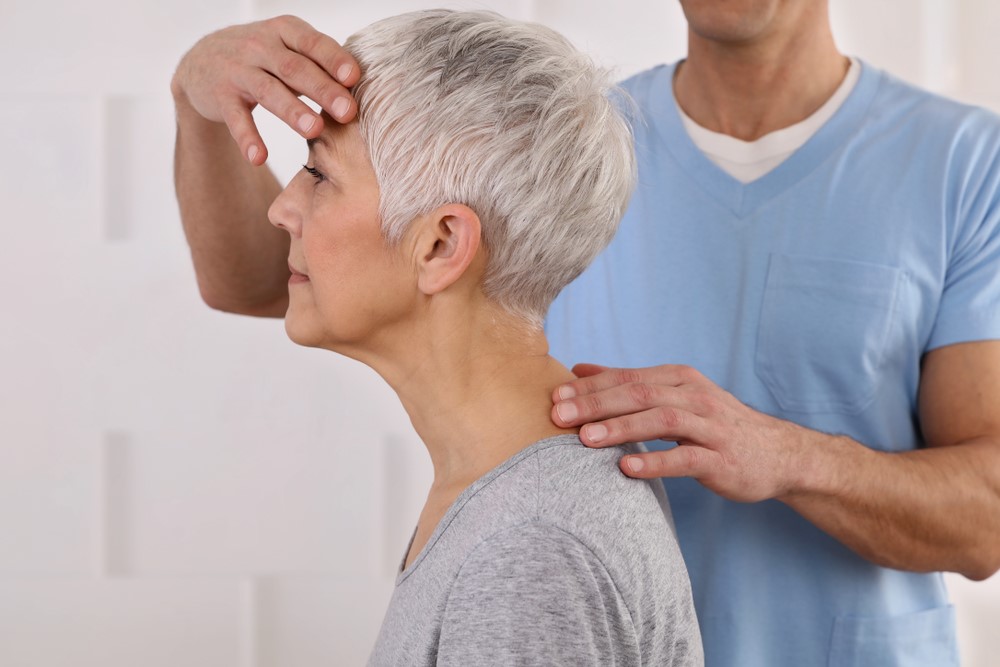
The prevalence of Complementary and Alternative Medicine (CAM) has been on the rise in the U.S., as more people are favoring a holistic approach towards their wellbeing. Roughly a third of the population has tried CAM (NCCIH, CDC, 2015), with women being more likely to do so than men.
A national health survey in 2012 revealed that more than $30 billion is spent on CAM annually in the U.S. (NCCIH). These high figures show that CAM is attracting more and more attention within healthcare (Frass et al. 2012). The 2017 National Health Interview Survey reported an uptick in U.S. adults’ and children’s use of some CAM remedies over a 5-year span (Clarke et al, 2018; Black et al. 2018).
An estimated 30% to 70% of cancer patients of varied ethnicities report they incorporated some form of herbal medicine, massage, vitamins, homeopathy, and folk remedies into their cancer care (Barrett et al. 2016). These studies suggest that the use of CAM is influenced by cultural norms, with unique preferences among different ethnic groups.
Factors that Influence Complementary and Alternative Medicine Usage
A review of articles published between 2003 to 2018 cited three reasons for using CAM (Tangkiatkumjai et al., 2020)
- having an expectation of benefits of CAM (84% of publications)
- dissatisfaction with conventional medicine (37% of publications)
- perceived safety of CAM (37% publications)
Western populations want to be in the driver’s seat when it comes to their health and wellbeing.
Another reason for the continuous climb in CAM use is that people crave more time and attention from a practitioner.
There is a growing dissatisfaction in the hearts of patients about the one-size-fits-all generalized kind of care they receive. Some spend more time in the waiting room than they do with their provider. Patients report that they find a greater connection, attention and consulting time with their CAM providers.
Patterns in Seniors’ Use of CAM
Holistic pain management for seniors is becoming more popular, with many seniors relying on CAM for the treatment of their disease or as a part of their wellness and healthy living plan. The use of Complementary and Integrative Medicine (CIM) is on the rise among diverse populations of older adults in the U.S. Integrative Medicine refers to the use of complementary medicine together with mainstream medical care. It is commonly perceived as safer, less expensive, and more culturally acceptable (Nguyen & Lavretsky, 2020).
According to the 2017 National Health Interview Survey, increases were seen from 2012 to 2017 in the use of complementary health approaches in the past 12 months among U.S. adults for all modalities examined. The use of yoga increased from 9.5% to 14.3%, while the use of meditation increased more than threefold from 4.1% in 2012 to 14.2% in 2017.
More adults are including some CAM modalities in their pain management routine. This is especially desirable because of general health benefits and lower costs (Siddiqui, 2014).
Variation in CAM Use by Ethnic Groups
This growth in the use of CAM was more pronounced among non-Hispanic Whites than among racial and ethnic minorities, increasing an already existing White-minority gap in CAM use (Tangkiatkumjai et al., 2020). However, there are variations in attitudes toward CAM use between the ethnically diverse populations in the U.S.
A study showed that whites were more than twice as likely to see a CAM provider than African Americans or Hispanics. CAM use by Hispanics increased by only 1% over the 5-year period. Asians used CAM practices only slightly less than whites.
Su and Li report growth in CAM use, especially massage and acupuncture (Su & Li, 2011). Contrary to expectations, another study of mostly Hispanics found that most did not practice Hispanic folk medicine, paralleling the results of nationwide studies of Hispanic’s CAM use. We might expect folk medicine to be associated with immigrant culture, but most respondents did not use folk medicine regardless of place of birth. There was no difference in CAM use between US-born and non-US-born Hispanics (Ho et al. 2015).
Still, there were differences in the choice of CAM therapy among a group of ethnic minority women.
- African Americans most often used spiritual healing (36%)
- Chinese Americans most often used herbal remedies (22%)
- Latino women most often used dietary therapies (30%) and spiritual healing (26%)
- White women opted for 35% used dietary methods and 21% used physical methods, such as massage and acupuncture.
In general, younger women, those with a higher educational level or income, and those with private insurance were more likely to use alternative therapies (Lee et al. 2020). Negative attitudes towards CAM and satisfaction with conventional medicine were the main reasons for non-use (Tangkiatkumjai et al. 2020).
One’s social network significantly influences the use of CAM among Asian populations. Affordability and easy access to CAM and tradition were significant factors amongst African American populations (Tangkiatkumjai et al. 2020).
Forms of Pain

Pain can either be acute or chronic, come in many forms, and stem from many underlying causes. Understanding the root cause is critical to selecting the right type of CAM. What may work for a migraine may not work for knee pain and vice versa.
Chronic pain may (defined as ongoing pain that lasts for weeks or years) result from any number of health conditions, an injury, medical treatment, inflammation, or a problem with the nervous system. Sometimes, the cause for the pain is unknown.
Pain is a complex experience consisting of a physiological and a psychological response to a noxious stimulus.
Pain can make it difficult to move around, causing many adults to abandon the workforce and their social lives. Unabated, pain can lead to sleepless nights and cause anxiety or depression. It’s no wonder that people are eager to explore their options outside of today’s medical model of care.
Conventional Methods for Pain Treatment/Management
Conventional therapies for pain management include medication, surgery, physical therapy and occupational therapy. Medications can be in opioid and non-opioid to treat mild to severe pain.
Although these therapies can be quite effective, they are not without drawbacks and limitations. The tendency is to treat pain, which is merely a symptom. It does nothing to resolve the root cause. When the root cause isn’t addressed, the pain can return, often with a vengeance.
Conventional approaches also come with risks that are often underestimated or ignored. For example, over-the-counter painkillers can increase the risk of heart problems, with the side effects sometimes leading to hospitalization.
Opioids provide even more powerful pain relief, with pronounced risks too, including the risk of addiction. Indeed, opioid addiction among seniors is a surprisingly widespread problem.
CAM Modalities for Pain Management
Pain is one of the most common reasons for CAM use (Mikhail et al. 2004; Grazzi et al. 2021). About 38% of Americans use some form of CAM to manage their chronic pain. Furthermore, in the U.S., some studies suggest that preferences for CAM are increasing nationally, with 30% to 70% of cancer patients of varied ethnicities incorporating herbal medicine, massage, vitamins, homeopathy, and folk remedies into their cancer care. These studies suggest that the use of CAM is influenced by cultural norms, with unique preferences among different ethnic groups (Barrett et al. 2016).
Conventional medicine seems to have the solution for acute pain, but more people are turning to holistic approaches for the resolution of their chronic pain.
The treatment types available in the CAM health care system are as varied as the illnesses they treat. Many of these could be relevant as part of holistic pain management for seniors.
- CAM therapies for chronic low back pain include acupuncture, massage, spinal manipulation, and yoga
- CAM therapies for osteoarthritis pain include prolotherapy, tai chi, and yoga, glucosamine/chondroitin supplementation, mineral baths, herbal remedies
- Massage for chronic neck pain
- Acupuncture, hydrotherapy, spinal manipulation for chronic headaches
- Acupuncture and tai chi for fibromyalgia pain
Other common treatments include the ingestion of natural products such as ginseng, flaxseed oil, fish oils.
While the use of herbal medicine and nutrition for pain management are beyond the focus of this article, we encourage you to explore other excellent resources where you can learn more on the benefits of Traditional Chinese Medicine (TCM) on your path toward improved well being. It’s always advisable to work with a certified herbalist or licensed naturopath who can recognize potential adverse reactions from mixing traditional medicine with prescription medication, for example.
In this article, we will review the state of the evidence for the most common forms of alternative therapies for pain management, and where possible, make distinctions in the type of pain they are most effective at alleviating.
Acupuncture
Acupuncture involves the insertion of extremely fine needles into the skin at specific “acupoints.” This may relieve pain by releasing endorphins, the body’s natural pain-killing chemicals, and by affecting the part of the brain that governs serotonin, a brain chemical involved with mood. The advent of single-use, sealed needle packages has, for the most part, eliminated the risks associated with needle reuse.
Well-designed, unbiased studies on acupuncture are scarce. They may be inherently biased, as it is difficult to execute a blinded study, and have small sample sizes. The research methodology, form of pain being treated, selection of acupuncture points, and use of manual versus electrical stimulation all make it difficult to weigh out the evidence in a systematic way.
However, there are some interesting studies:
- One comprehensive review published in 2020 evaluated the research evidence for acupuncture in reducing pain among five conditions: lower back pain, migraines, fibromyalgia, neck pain, and abdominal pain. Migraines and fibromyalgia had the best outcomes following acupuncture, while abdominal pain had the least evidence. It was also effective for alleviating pain in patients with lower back pain, and provided short-term relief for neck pain (Patel 2020).
- A randomized controlled trial of 153 people demonstrated a significant reduction in pain associated with fibromyalgia, with benefits persisting at 12 months (Vas et al., 2016).
- A smaller randomized controlled trial of 50 women with fibromyalgia had similar conclusions: acupuncture significantly reduced pain and other symptoms of fibromyalgia (Uğurlu et al., 2017).
- A 2016 systematic review of 63 studies concluded that acupuncture had moderate effects on relieving musculoskeletal related pain, although the quality of evidence was rated as low-quality (Yuan et al., 2016).
- A systematic review comparing acupuncture to other physical treatments found that acupuncture was significantly better at relieving knee pain from osteoarthritis than muscle-strengthening exercises (Corbett et al., 2013). However, researchers noted that inherent bias and poor quality in most studies reviewed.
- A 2017 evaluation of the research on acupuncture found evidence that it has a small beneficial effect on acute lower-back pain and a moderate beneficial effect on chronic low-back pain. There’s evidence that acupuncture has short-term benefits in relieving knee pain caused by osteoarthritis.
Evidence also points to acupuncture as an effective approach for reducing the duration and frequency of migraine attacks (Urits et al., 2020).
This same review notes that there is moderate evidence that acupuncture may be on par with conventional drugs. Acupuncture, as an adjunctive treatment, appears to be beneficial for primary headache disorders, which includes migraines, tension headaches, and chronic headaches.
There’s moderate-quality evidence that acupuncture may reduce the frequency of migraines and moderate-to-low quality evidence that it may reduce the frequency of tension headaches. It’s worth noting that improvements are seen after 6 to 8 sessions; however, the exact number of sessions expected to yield relief has not been established.
In my own personal experience, a typical session can range in cost from $60 to $120 for lower back pain and other less minor issues. Many insurers now cover acupuncture under certain circumstances. However, you need to consider the number of sessions that may be needed to reap the benefits for some conditions, and unfortunately, the exact number of sessions aren’t well established.
Yoga

Yoga can be described as a system of controlled movements and exercises that promote relaxation, while also reinvigorating and strengthening the body and mind. I’ve participated in extreme forms of yoga, like Bikram, where the room is heated to 105°F (40°C) but have felt inept and clumsy at getting through any other form of yoga. I am not well versed on the variety of yoga styles out there.
As with studies on acupuncture, in which practitioners’ choice of acupoints may differ, studies of yoga often focus on yoga itself, rather than digging into the specific type.
At best, investigators may point to a minimum “dose” of yoga (used vaguely to describe any form of yoga) that is needed to feel pain relief, as well as the duration and number of sessions. There’s often little information about the best type of yoga for a given situation, even though the benefits may vary depending on the type chosen.
As for research itself, results have been mixed.
- A randomized trial of 176 older adults showed that yoga (24 sessions over 3 months) was no better at relieving pain than having done nothing (Teut et al., 2016).
- Researchers behind a 2020 meta-analysis of 6 randomized control trials found the opposite to be true (Kim, 2020). They concluded that 12 weeks of yoga had significant improvement in chronic lower back pain, compared to their control groups. This benefit was dependent upon the type of yoga, length of the session and other factors associated with the quality of the study.
- One systematic review and meta-analysis on the benefits of yoga on headaches found significant reductions in the pain intensity, duration, and frequency among patients with tension headaches, but had no effect on patients with migraines (Anheyer et al., 2020).
- Other investigators have suggested yoga may be valuable alongside medical therapy (Kumar, 2020).
- Much weaker evidence is found for yoga as a form of pain relief for persons with osteoarthritis (Lauche, 2019). In 2020, researchers completed a meta-analysis of 9 randomized control trials, consisting of mostly middle-aged women. They reported that while yoga was found to be better at reducing pain and stiffness and improving overall function than exercise, these improvements were seen only among individuals with osteoarthritis of the knee and could not be misconstrued as an endorsement for yoga as a recommended form of therapy in light of the major flaws in the study designs of these trials.
Any improvement in pain may hinge on their expertise, methods, and years in practice in most forms of CAM. With yoga, your own commitment to the proper form will play a big part in the outcomes. The same goes for any potential injuries. If you overdo it or execute movements that may be too advanced, you also run the risk of getting injured. Injuries from yoga are not uncommon, especially to the lower back.
One study found that yoga causes musculoskeletal pain in 10% of participants and makes 21% of existing injuries worse. You don’t want to begin a yoga regimen to relieve tension headaches, only to walk about with lower back pain.
When my wrists took a beating after getting rear-ended, my right wrist, which was gripping the bottom of the wheel at the time, has never been the same. The weight of my body on those downward dogs in yoga sessions would batter my wrists for weeks out.
A better approach would’ve been to speak to the yoga instructor about my concerns, as they may have suggestions for working around certain movements.
Massage
Massage is the action of rubbing, kneading or hitting someone’s body, to help the person relax or to relieve aches. The effectiveness of massage lies in a simple and direct strategy: working from the external, outer mechanisms of pain to the primary, root cause.
- Massage therapy might provide short-term relief from low-back pain, but the evidence is of very low quality. It has not been shown to have long-term benefits for low-back pain. The authors reviewed 51 randomized controlled trials and reported having little confidence that massage was effective at treating lower back pain (Furlan et al., 2015).
- Another systematic review of seven trials found only low- to moderate-quality evidence that massage therapy was superior to nonactive therapies in reducing pain among patients with osteoarthritis or rheumatoid arthritis (Nelson & Churilla, 2017).
There are very few studies on the effects of massage on headaches, and the few that exist have low quality methodology (Chaibi, 2011).
- A broader review of manual therapies on headaches found only two studies on manual therapy prior to 2011. One of these showed a significant reduction in pain intensity, while the other study saw a reduction in the frequency of headaches. Both were missing reports on certain outcomes, such as the duration of the headache.
- A more recent review from 2017 on a range of complementary approaches, suggests that while acupuncture, massage, yoga, biofeedback, and meditation appear to have positive effects on headaches, the quality of those studies remains very low (Millstine et al., 2017).
Hydrotherapy
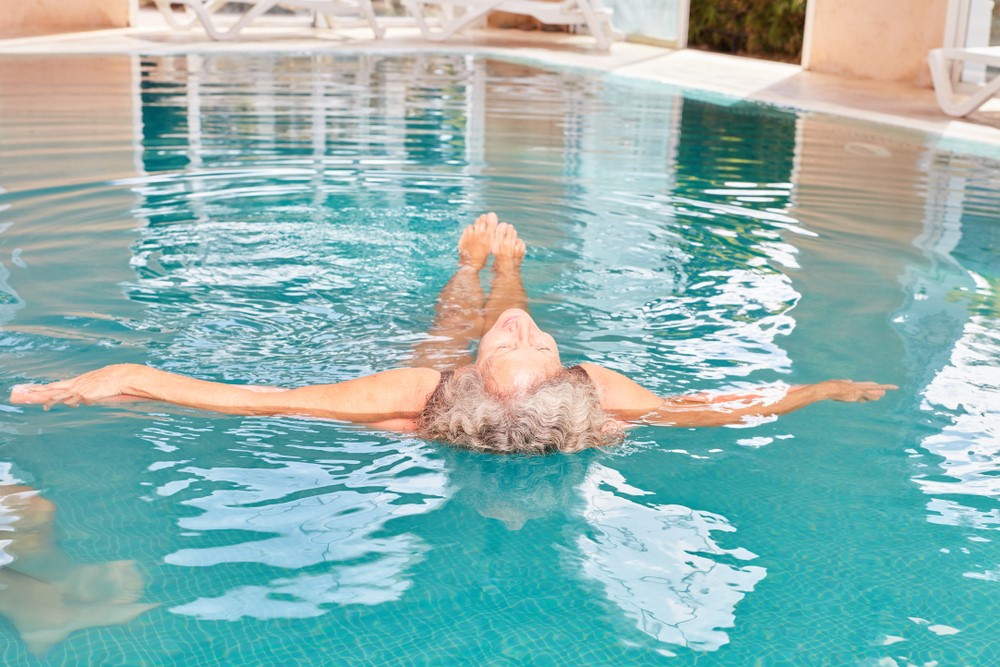
Hydrotherapy is the external or internal use of water in any of its forms (water, ice, steam) for health promotion or treatment of various diseases with various temperatures, pressure, duration, and site. It involves hyperthermic immersion, warm-water bathing, low-temperature sauna bathing, winter swimming, ice massage, aquatic exercise and even drinking water (Mooventhan & Nivethitha, 2014).
- Hydrotherapy may be particularly relevant for knee osteoarthritis, helping to strengthen muscles, while the buoyancy reduces the physical stresses of weight bearing (Dias et al., 2017).
- Hydrotherapy is said to relieve pain caused by rheumatism, fibromyalgia, or asthma; and also improves general well-being (Huttunen et al. 2004).
- Spa baths have also been found to improve pain and tenderness (Yurtkuran et al. 2006). The natural warmth of the waters and heavy mineral content may contribute to pain relief.
- To date, randomized controlled trials have yielded conflicting findings on the efficacy of hydrotherapy compared to land-based exercises for individuals with knee or hip related osteoarthritis. Some have found that hydrotherapy is superior for pain relief, while others have found that hydrotherapy is as effective as land-based approaches or even less effective (Dias et al., 2016).
It’s also possible that, as with other CAM approaches, the results may vary depending on the specific needs of the patient, their health conditions, their genetics, the specific approach they’re taking, and a variety of other factors.
This is why holistic pain management for seniors should always be practiced with the support of the senior’s doctor. Doing so helps avoid issues and make sure that the best outcomes are achieved.
Meditation
If only the average person could summon the meditation powers of a Buddhist monk to dull any pain, we’d rid ourselves of this raging opioid epidemic.
Meditation is a practice where an individual uses a technique, such as mindfulness, to train their attention and awareness, to achieve a mentally clear and emotionally calm and stable state (Walsh & Shapiro, 2006; Cahn & Polich, 2006).
A 2017 review of studies of mindfulness meditation for chronic pain showed that it is associated with a small improvement in pain symptoms. It also concluded that mindfulness-based stress reduction, another type of meditation, is associated with improvements in pain intensity and physical functioning in low-back pain, compared to usual care, but the effect may be small and short term (Hilton et al., 2017).
Tai Chi
Tai Chi is a Chinese martial art that incorporates gentle exercise movements and deep breathing. It utilizes slow, gentle movements where practitioners shift their weight between feet while moving their arms. The exercise consists of elements that combine martial arts, meditation, imagery, and deep breathing (Sharma and Haider, 2014).
Practitioners of almost any age can perform tai chi, including the elderly and those with physical limitations or disabilities (Wang et al. 2009).
A 2017 review of the evidence by the AHRQ concluded that tai chi has short-term (up to 12 weeks) and medium-term (12 to 26 weeks) benefits on pain for people with knee osteoarthritis. There hasn’t been enough research to show whether it’s helpful for longer periods of time (Newberry et al., 2017).
It’s uncertain whether tai chi is helpful for headaches.
Tai Chi isn’t difficult to get into either, as there are often classes at local senior centers, YMCAs, and gyms. Tai Chi for Arthritis and Fall Prevention is an evidence-based program for older adults that has shown to reduce pain as one of its outcomes. Other benefits included increased balance, strength, flexibility and a reduction in the number of falls.
Hypnosis
Hypnosis is an artificially induced, trancelike state, in which a person has heightened suggestibility. In a hypnotic state, the patient is guided by the hypnotist, who is able to affect their perception of the environment. Hypnosis is more than a short-term experience, as the process can play a role in memory recovery and self-awareness (Orne, 2021).
The practice of hypnosis can also help with chronic pain by changing the patient’s perception and experience of pain.
Research shows that hypnosis is moderately effective in managing chronic pain, when compared to usual medical care. However, the effectiveness of hypnosis can vary from one person to another (Thompson et al., 2019; Elkins et al., 2007; Paredes et al., 2019).
However, hypnosis is also something to be careful with, as it can place participants in a vulnerable state.
The most serious side effect is the creation of false memories, memories that could then have an adverse effect on the patient’s life. This is one reason that people who suffer from psychotic symptoms, particularly delusions, aren’t good candidates for hypnotherapy.
There may be emotional side effects as well.
Such issues mean that seniors should always talk to their doctor before considering hypnotherapy. It’s also important to look for a licensed hypnotherapist, one that has been well-trained.
Finally, be aware that hypnotherapy doesn’t work for everyone. Some people don’t see benefits, even after multiple sessions, while others aren’t able to be hypnotized at all.
CBD/Cannabidiol

CBD (Cannabidiol) is an extract of the cannabis or hemp plant. CBD is one of over 200 compounds found in the cannabis plant. Contrary to common belief, it does not contain tetrahydrocannabinol (THC), the psychoactive ingredient found in marijuana that produces a high.
The most common CBD formulation is oil. It can be applied topically for pain or can be ingested by placing under the tongue. Other forms include CBD capsules, CBD gummies, CBD facials, etc. You can even find CBD oil rollers (like deodorant rollers) made to rub over your knees.
There’s some evidence that cannabis-based medicines may be helpful for chronic nerve (neuropathic) pain and perhaps other types of chronic pain. This includes CBD oil, which does not contain THC, along with medical marijuana products, where the THC is present. Less clear, is whether the potential benefits outweigh the potential harms (Mucke et al., 2018; Vagg, 2021).
In their 2021 study, the International Association for the Study of Pain Presidential Task Force on Cannabis and Cannabinoid Analgesia cited a lack of rigor in the trials they reviewed as a major limitation in their ability to make recommendations around the use of cannabis and cannabinoids for pain management. The Task Force expressed concern over the safety of these products in an unregulated market.
Further research is needed that meets U.S. Food and Drug Administration (FDA) requirements for determining the safety and efficacy of cannabinoids for the management of pain.
Laws around CBD and medical marijuana vary depending on your location, so you’ll need to look at your local laws first. Some states set a max limit of THC levels that CBD can contain
Of the two types, CBD is more widely legal and does not require a prescription. For tips on how to find high-quality CBD oil, visit Consumer Reports.
The laws around marijuana are more complex. Some states have made medical marijuana legal, while others have not. You’re likely to need a prescription.
You should do your due diligence when buying products too, as the quality can vary.
Precautions
Psychological approaches (such as mindfulness/meditation, hypnosis, relaxation techniques), physical approaches (such as acupuncture, massage therapy), and the combination of psychological and physical approaches (such as tai chi and yoga), are generally safe for healthy people if they’re performed appropriately. It’s always important to verify the practitioner’s training and credentials.
Still, it’s helpful to consider safety before using complementary health approaches.
Safety depends on the specific approach and on the health of the person using it. If you’re considering or using a holistic approach for pain, check with your health care providers to make sure it’s safe for you. People with medical conditions may need to modify or avoid some approaches.
You may come across many personal testimonies from CAM users concerning their own experiences with pain relief or reduction. The scientific evidence for many of these therapies, unfortunately, is limited by poor quality study designs. The source of your pain will also drive any potential benefit from the form of therapy.
Finally, be sure to pay attention to your own body.
Look for signals about whether the therapy is working or whether it makes things worse. For example, if you experience regular joint pain during and after yoga, you may need to modify poses or find an alternative type of CAM.
Conclusion
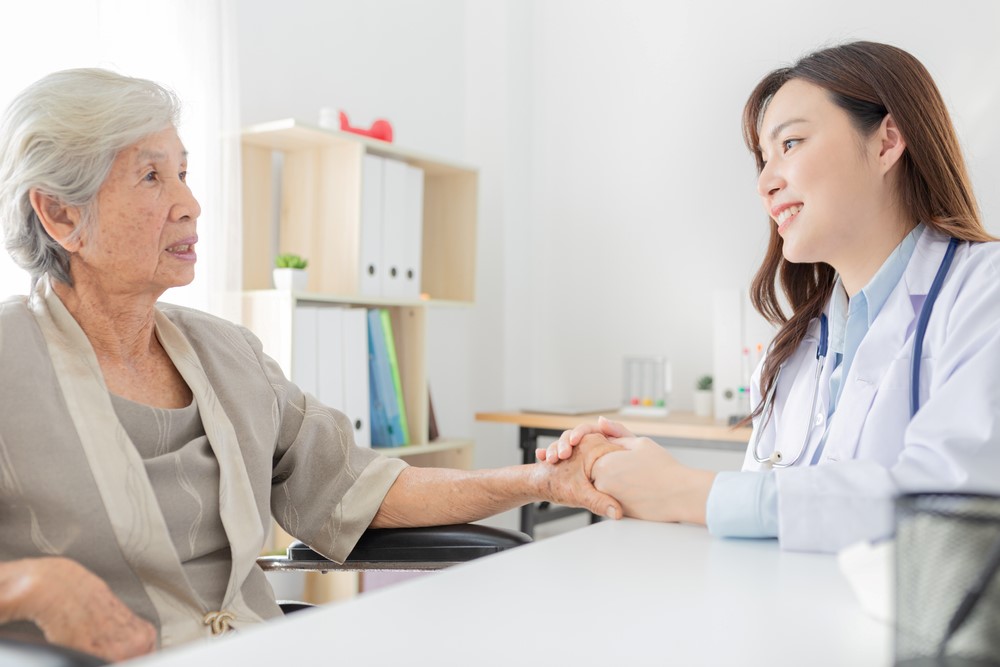
The growing acceptance of many forms of CAM and holistic pain relief is not surprising. As rates of chronic illness have increased, older adults are finding that Western medicine’s approach is either too invasive or may leave people addicted to opioids. CAM appears to be an effective and affordable alternative to some forms of chronic pain management.
It is a promising field that still holds a lot of potential for optimum health care. However, with the widespread use of CAM therapies, health care providers should regularly ask their patients about their use of CAM before they prescribe any conventional medicines, in order to prevent undesirable adverse effects or CAM-drug interactions.

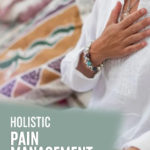
Leave a Reply